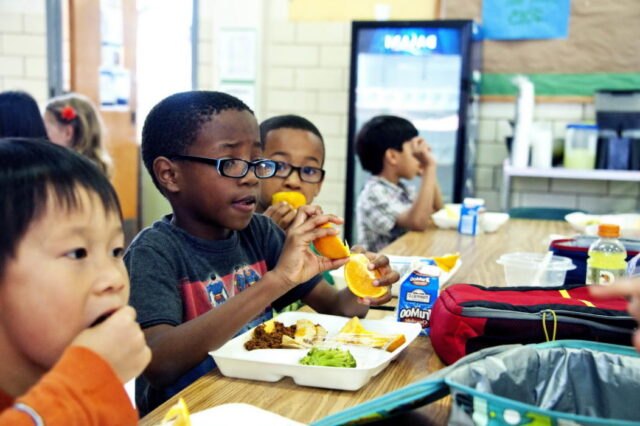Switching form in-person instruction to online has been a major adjustment for both parents and students. In addition to having to get accustomed to a new way of learning, many parents have had to adjust their budgets for their students’ breakfasts and lunches.  About one-quarter of parents say that they have gone into debt to pay for their kids’ at-home expenses, citing mostly the cost of their breakfasts and lunches.
About one-quarter of parents say that they have gone into debt to pay for their kids’ at-home expenses, citing mostly the cost of their breakfasts and lunches.
“School lunch was a lot cheaper to pay for every day versus making lunch at home,” Colleen McCreary, chief people officer at Credit Karma, whose son started his 2020-21 school year in online classes, said in a recent interview with USA Today. “It’s all-day grazing, depending on the age of a child.”

In a recent survey conducted by Credit Karma, the survey shows how the 2020-2021 school year can unequivocally affect household finances. More than half of the parents surveyed said that not only do they expect to spend more on school supplies, but grocery prices have risen, since March, hence, more out-of-pocket expenses.
“When it comes to back to school, assess what you already have and prioritize must-haves,” McCreary said. “Many of those school sports won’t happen, so you don’t need to spend on those things. Maybe it’s just a new shirt for the first day of school,” given many kids will be on Zoom calls this fall.
There is a push by the School Nutrition Association that meals be provided for free to all students during the 2020-2021 school year.

“It would be simpler for schools in the middle of a pandemic to distribute meals to any child who requests one,” Diane Pratt-Heavner, director of media relations for the School Nutrition Association said in the same interview. “There won’t be any PIN pads. There won’t be any questions or ‘Oh, my mom and dad didn’t send in any money.’”
Sound-off, we want to hear from you. How are you handling the added financial burden of the continued hardships of the Coronavirus pandemic.







